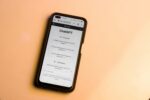Blended Learning 2.0: How Hybrid Education Models Are Redefining Classrooms in 2025

In 2025, the world of education looks very different from what it did just a few years ago. The once-clear boundary between physical classrooms and digital platforms has dissolved, replaced by a seamless ecosystem where technology enhances every part of the learning experience. At the center of this shift is blended learning — a model that combines traditional face-to-face instruction with online tools, digital content, and adaptive technology.
Once considered an emergency response during the pandemic years, blended learning has evolved into a deliberate, research-backed approach that reimagines what it means to teach and learn in the digital age. Today, it’s not just a teaching method — it’s a philosophy of flexibility, accessibility, and continuous engagement.
The Evolution of Blended Learning
The roots of blended learning go back to the early 2000s, when educators began experimenting with integrating digital platforms into traditional lessons. However, the global pivot to remote learning in 2020 accelerated adoption dramatically. Schools, universities, and corporations alike discovered the potential of hybrid formats — but also their limitations.
In 2025, blended learning has reached its second phase, often referred to as Blended Learning 2.0. This stage focuses on intentional design, interactivity, and personalization rather than simple digitization. It’s not about replacing teachers with screens but augmenting instruction through intelligent technology and data-driven insight.
Blended Learning 2.0 emphasizes balance — between autonomy and guidance, synchronous and asynchronous learning, digital innovation and human connection.
The Core of Blended Learning: Flexibility Meets Structure
One of the greatest strengths of hybrid learning is its inherent flexibility. Students can access materials anytime, anywhere, and at their own pace — while still benefiting from the structure and support of in-person sessions.
This combination allows educators to tailor lessons to different learning styles. A student who absorbs information visually might revisit recorded lectures, while another who learns best through interaction can focus on live discussions and collaborative projects.
Modern platforms use data analytics to track engagement, quiz performance, and participation — enabling teachers to identify who might need extra help and who’s ready to advance.
Essentially, blended learning empowers students to take ownership of their education, fostering independence and accountability without losing the benefits of classroom community.
Technology as the New Teaching Partner
Digital tools are no longer supplementary; they’re central to modern pedagogy. AI-driven tutors, learning management systems, and gamified study apps now act as teaching partners, not just accessories.
Platforms like Google Classroom, Microsoft Teams for Education, and Canvas have integrated machine learning capabilities that help educators automate grading, recommend resources, and personalize feedback. Meanwhile, adaptive learning software adjusts difficulty levels in real time, ensuring each learner progresses at the right pace.
For example, AI can analyze how a student interacts with a lesson — the time spent on each slide, the questions they get wrong, even their writing style — to predict comprehension and suggest improvement strategies.
In the Blended Learning 2.0 model, technology enhances human teaching, creating a more dynamic, responsive, and inclusive classroom experience.
Personalized Learning Pathways
The traditional “one-size-fits-all” classroom is fading. In its place, blended learning is enabling personalized learning pathways tailored to each student’s strengths, interests, and goals.
Using real-time data and adaptive assessments, teachers can modify lesson plans to suit individual needs. For instance, a student struggling with algebra can receive extra practice modules or one-on-one online tutorials, while another excelling in creative writing can move ahead with advanced assignments.
This personalization helps students develop confidence and self-efficacy — they’re not just meeting minimum standards but actively shaping their own learning journeys.
Moreover, institutions can now analyze learning trends across cohorts, helping administrators and policymakers refine curricula and teaching practices.
The Rise of the Hybrid Classroom
In 2025, blended learning classrooms are highly interactive ecosystems that blur the line between physical and virtual spaces. Students might attend a morning lecture in person, participate in an online discussion in the afternoon, and submit an AR-enhanced project by evening.
Hybrid classrooms use a combination of digital whiteboards, real-time polling tools, and collaborative apps like Padlet and Miro to encourage engagement. The goal is not to replace in-person education but to enhance it with technological depth.
In some schools, hybrid setups include holographic teaching assistants or 360-degree cameras that allow remote learners to experience the classroom environment almost as if they were physically present. These innovations reflect a growing belief that presence in learning can be both physical and digital.
Accessibility and Inclusion: Breaking Educational Barriers
Perhaps one of the most transformative aspects of blended learning is its ability to bridge educational divides. For students in remote or underserved areas, hybrid education offers access to quality instruction without geographical constraints.
Likewise, learners with disabilities benefit from captioned videos, audio feedback, and customizable interfaces. Platforms designed with accessibility in mind can adjust font sizes, reading levels, and even color contrast for visual comfort.
Blended Learning 2.0 represents not just a shift in delivery but a democratization of education — a system where everyone, regardless of location or background, can learn on equal footing.
Teacher Transformation: From Lecturers to Learning Designers
Teachers are at the heart of the blended learning revolution — but their roles have evolved dramatically. Instead of being the sole source of information, they now act as facilitators, mentors, and designers of learning experiences.
Educators curate content, manage online discussions, and analyze engagement data to guide each student’s growth. This shift has required new forms of professional development, focusing on digital pedagogy, multimedia integration, and data interpretation.
In many ways, teachers are now “learning architects,” shaping digital and physical spaces that foster curiosity and collaboration.
Gamification and Motivation in Blended Learning
Gamified elements are proving essential in sustaining motivation and engagement in blended learning environments. From digital badges and leaderboards to point-based systems that reward consistency, gamification taps into students’ intrinsic motivation.
Apps like Kahoot!, Quizizz, and Classcraft make lessons feel more interactive and competitive — turning abstract concepts into experiences. For example, a history teacher might use a quest-style learning module where students “unlock” new eras as they complete assignments.
These interactive features create momentum, transforming learning from obligation into an ongoing, rewarding process.
Corporate and Lifelong Learning: Beyond the Classroom
Blended learning isn’t just reshaping schools — it’s redefining professional and lifelong education. Companies are increasingly adopting hybrid models to train employees through microlearning modules, simulations, and live webinars.
From healthcare to technology sectors, this approach provides flexibility while maintaining engagement. Employees can complete lessons at their own pace and apply concepts immediately in their work environments.
For adult learners balancing careers and personal responsibilities, blended formats make continuous skill development both realistic and rewarding.
The Future of Blended Learning: AI, VR, and Beyond
The next frontier of blended learning lies in immersive and predictive technologies. AI-driven learning companions, virtual reality (VR) classrooms, and metaverse-based universities are already being piloted across the world.
Imagine a history student exploring ancient Rome through VR, or a biology class dissecting 3D models of organisms in an AR lab. These innovations turn learning into lived experience.
As the line between digital and physical worlds continues to blur, blended education will become the norm rather than the exception — a holistic system that prepares learners for a world where adaptability and tech fluency are as important as knowledge itself.
The Human Core of Digital Learning
At its essence, blended learning is not about technology replacing teachers or students adapting to machines — it’s about humanizing digital education. It acknowledges that learning happens best when students feel connected, supported, and inspired, whether in person or online.
In 2025 and beyond, the most successful blended classrooms will be those that balance innovation with empathy, using technology to amplify — not overshadow — the teacher-student relationship.
Because even as tools evolve, the heart of learning remains the same: curiosity, creativity, and the shared pursuit of understanding.
Read Also: Green Alternatives to Classic Leisure: How Virtual Habits Shrink Our Carbon Footprint








